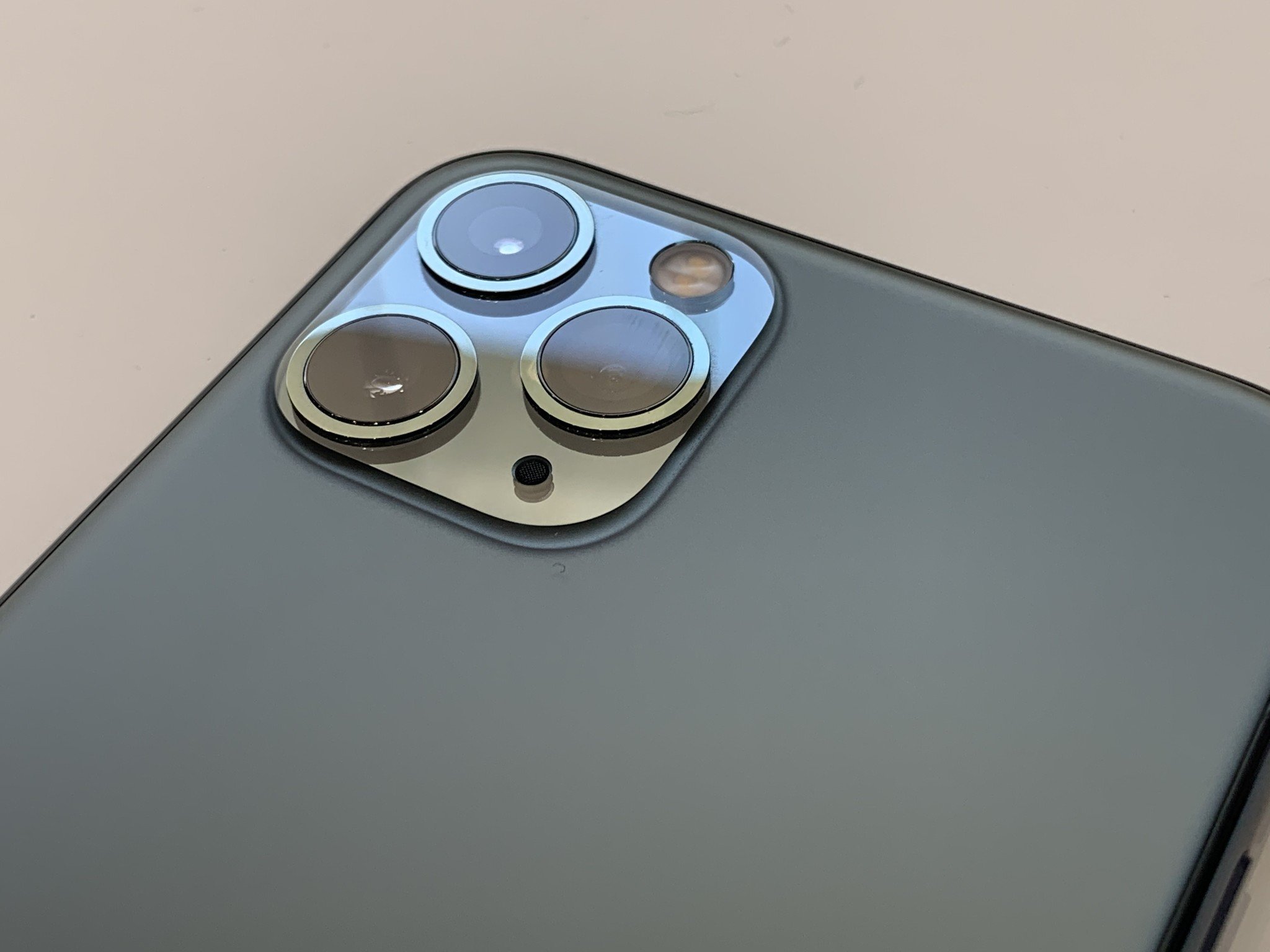What's the difference between 5G sub-6 and millimeter wave for iPhone 12?

The time of 5G is upon us, whether we're ready or not. Recent rumors point to Apple's next iPhone, which we'll call the iPhone 12 for now, coming equipped with some level of 5G support. Working with Qualcomm, Apple is reportedly preparing to have phones with the next-generation wireless technology ready to go at some point this fall.
But just what is 5G, and what will it bring to iPhone 12? What are sub-6 and mmWave? Here's what you need to know about all of it.
First: What is 5G?
5G is the next generation of cellular wireless technology, a step up from 4G LTE. While LTE has proven fast enough for most people on their mobile devices, 5G aims to boost speeds (in many cases) and will offer more capacity than current LTE networks can handle.
While 5G as a whole encompasses several technologies and applications, for our purposes, we'll focus on how 5G relates to mobile devices, which means focusing on our attention on millimeter wave and sub-6, the two different types of spectrum cellular carriers are using to build out their 5G networks.
Millimeter wave
Millimeter wave, stylized by Qualcomm and multiple U.S. cellular carriers as mmWave, is in many ways what people think of when they think of 5G. To put it another way, it's the really good stuff. It's that high-speed, high-capacity network, real next-generation technology.
mmWave is fast, but its range is extremely short
It's also kind of a mess at this stage. mmWave uses high-frequency radio spectrum (between 24GHz and about 39 GHz) to function, which allows for speeds up to (and even beyond, in some cases) 1 Gbps, but that high frequency means that range is extremely limited in mmWave's current implementation. mmWave has trouble penetrating buildings and other objects. mmWave is also rolling out more slowly than sub-6.
You're also likely to take a hit on battery life, at least at first. This often happens with newer network technology. More data downloaded means that your phone's CPU will be working harder, as fast as it can to process it all, and that's going to hit your battery life. This issue could be alleviated in time as mmWave use expands, and Qualcomm supplies more power-efficient 5G modems.
Master your iPhone in minutes
iMore offers spot-on advice and guidance from our team of experts, with decades of Apple device experience to lean on. Learn more with iMore!
Once it's built out, mmWave could be great for densely-populated urban areas, and will help greatly alliviate concerns about capacity. Still, it's never going to have the wide, cross-country coverage to serve everybody, particularly those in suburban and rural areas.
For that, carriers are turning to sub-6.
Sub-6
Sub-6 refers to spectrum with frequencies below 6 GHz. It's this spectrum that currently forms the backbone of T-Mobile's and Sprint's 5G networks (though T-Mobile also uses mmWave in some areas). Equipment for sub-6 networks can be deployed alongside that of LTE networks, and the two spectrums can co-exist.
For many, sub-6 5G will seem to be little more than a kind of 'LTE+,' not reaching anywhere near the speeds of mmWave, but often providing faster data rates than LTE (at least theoretically) over a much greater geographical area than mmWave. Sub-6 can also penetrate things like walls and other objects, so it will be a more consistent signal in more places than you can expect in mmWave.
Sub-6 networks trade speed in exchange for much greater range and consistency.
And it's this type of 5G network that most iPhone customers are likely to connect to most of the time. While mmWave boasts much more impressive speeds, sub-6 will be available to more people in more places.
Speeds on sub-6 networks could reach between 100 MHz and 400 MHz, though initial tests have shown that speeds right now are generally lower and in line with current LTE speeds. But one of the advantages that sub-6 brings to the table, as noted by our friends at Android Central, is capacity. More devices will be able to connect to the same 5G antenna than an equivalent 4G antenna, keeping speeds for everyone consistent most of the time.
The need for speed
A recent report from Opensignal detailed the performance of the currently-deployed 5G networks, both mmWave and sub-6, from Verizon, T-Mobile, AT&T, and Sprint. Verizon, which currently only uses mmWave for its 5G network, saw speeds as high as 723Mbps on its 5G network. T-Mobile's mmWave network, while still fast, drops off significantly from that to about 243Mbps, with T-Mobile's sub-6 network averaging around 48Mbps.
Sprint, which is about to be acquired by T-Mobile and which utilizes mmWave in its network, saw average speeds of 183Mbps. AT&T, using only sub-6, reached speeds of around 59Mbps.
The technology and networks for 5G are still in their early days. Sub-6 will get a bit faster. mmWave will be available in more areas.
Questions to answer about 5G on iPhone 12
While other companies have been rolling out phones equipped with 5G modems for about a year now, Apple has shown its characteristic lack of urgency when adopting this new technology. That said, by the time Apple is preparing to announce its newest flagship devices, 5G is likely to have significantly expanded across the U.S., and around many parts of the world, and Apple has probably been preparing for that.
According to rumors, Apple will release at least four different models of iPhone this fall, which are collectively likely to be the iPhone 12 series. If Apple sticks to its pattern, we're looking at one or two models of iPhone 12 (perhaps an iPhone 12 and iPhone 12 Max), as well as the iPhone 12 Pro and iPhone 12 Pro Max. It seems likely that all of these phones will support 5G in at least some capacity.
But there are still mysteries when it comes to 5G technology on the iPhone. For instance, will Apple offer different models of its 5G phones, one for mmWave and one for sub-6? For the past couple of years, Apple has provided one model of each of its iPhones. No matter the color or storage configuration, you could use whichever iPhone you purchased on any network as long as it was unlocked.
It seems likely that Apple will offer a single model for each phone, one that supports both mmWave and sub-6 5G networks.
If I had to guess, and at this point, that's all we can do, I would bet that Apple strives to release a single model for each of its phones once again. So, if the iPhone 12 supports 5G, I think it's likely that it will support both sub-6 and mmWave in the same handset. Splitting iPhones into separate models for different networks was a lot easier in the 3G and 4G eras, when a network either used CDMA or GSM technology, but never (or at least rarely) both.
But in the 5G era, with Verizon, AT&T, and T-Mobile (with Sprint soon to join them) all going in on both sub-6 and mmWave, splitting the iPhone into sub-6 and mmWave models will create a headache for customers, carriers, and Apple itself. While it likely presents its own technological challenge, it seems likely that when Apple offers a 5G handset with support for both sub-6 and mmWave.
What do you expect?
What do you expect to see from Apple in the realm of 5G networking? Do you think it will release a single model of its phones that supports both mmWave and sub-6? Give us your thoughts in the comments.
Joseph Keller is the former Editor in Chief of iMore. An Apple user for almost 20 years, he spends his time learning the ins and outs of iOS and macOS, always finding ways of getting the most out of his iPhone, iPad, Apple Watch, and Mac.

